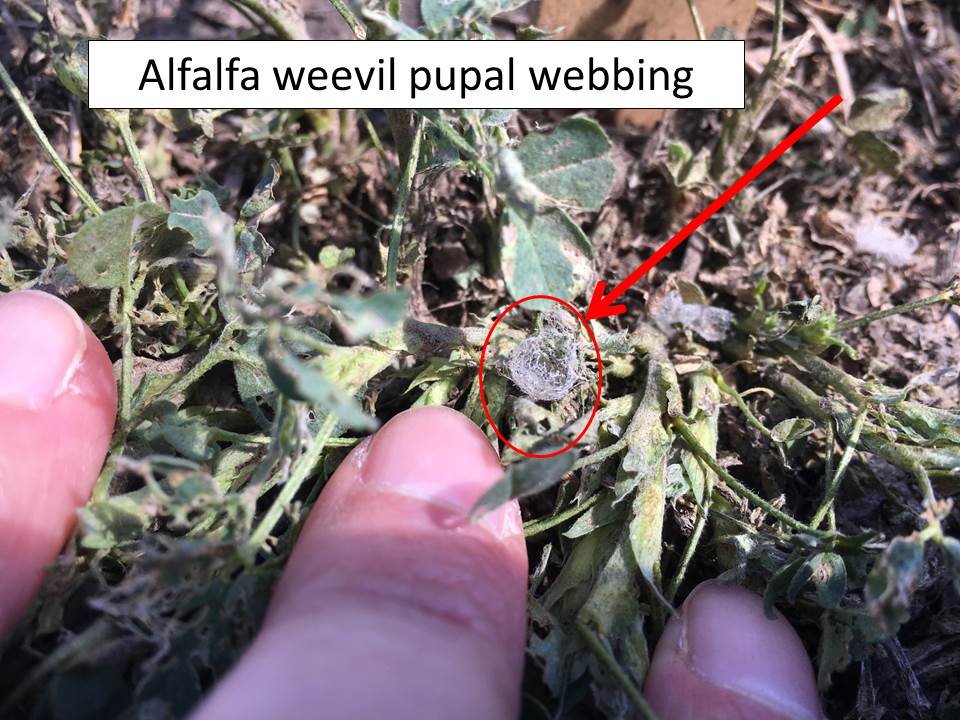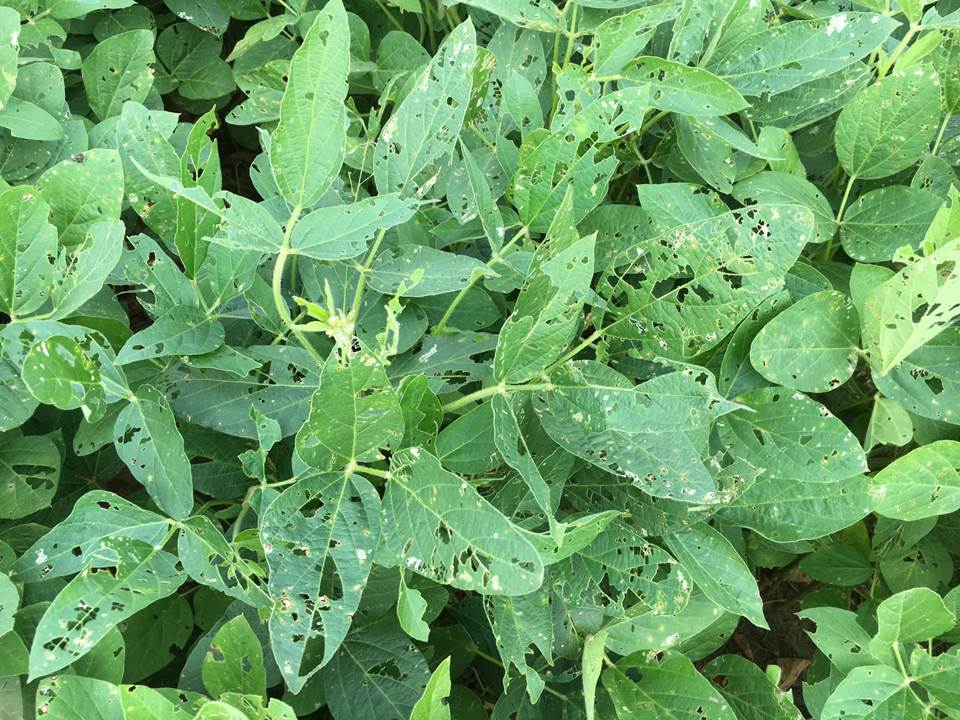— by Dr. Jeff Whitworth and Dr. Holly Schwarting
Alfalfa weevils are cool weather insects, thriving when temperatures are between 50-75°F and thus mostly affect alfalfa prior to the 1st cutting. That has been the case for about the last two weeks in north central KS. Temperatures have been on the cool side and the alfalfa has not been growing as well as most producers would like. However, alfalfa weevils have been very active to the point where there are many pupae and even pupal webbing with holes indicating the adult weevils have already emerged and dispersed. Infestations as of 6 April were composed of very small 1st instar larvae to larger, more mature 3rd instar larvae, as well as pupae, and newly developed adults. Also, lady beetle larvae were quite common in most alfalfa fields, but no aphids were detected.
Alfalfa weevil feeding damage
Alfalfa weevil feeding damage – close







